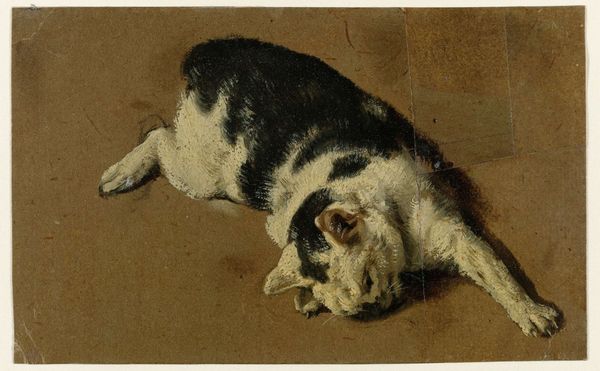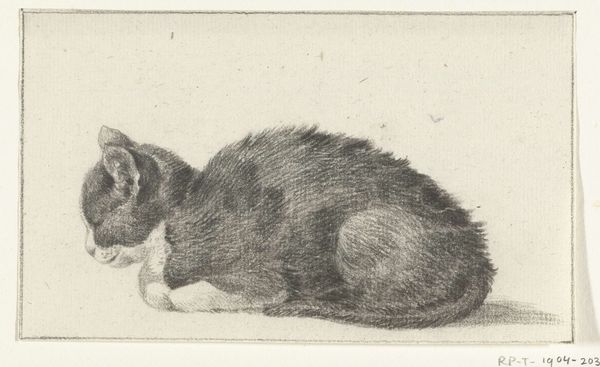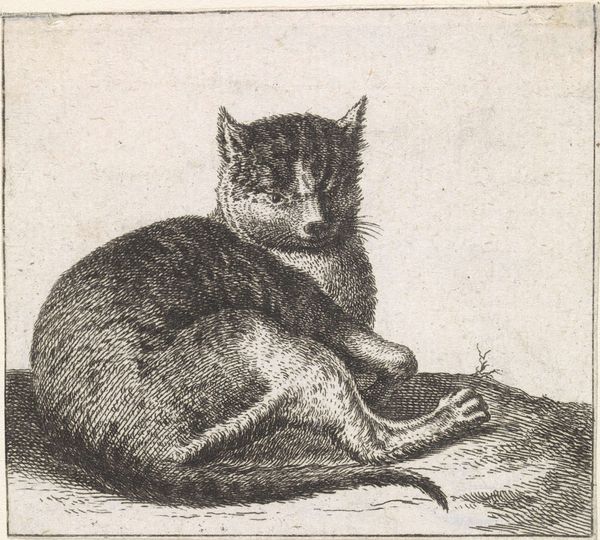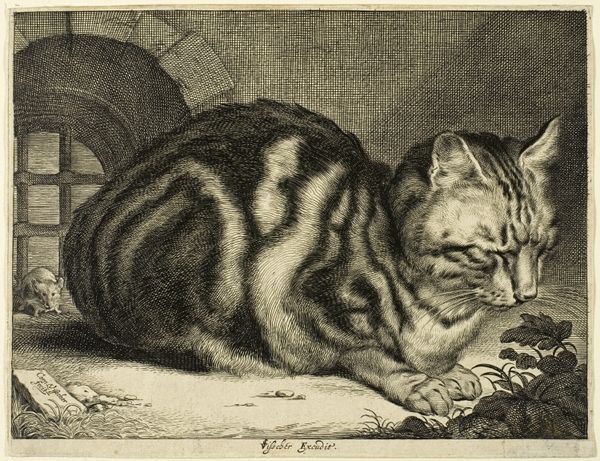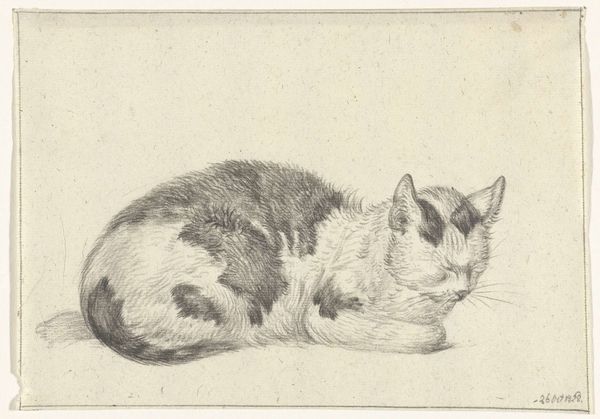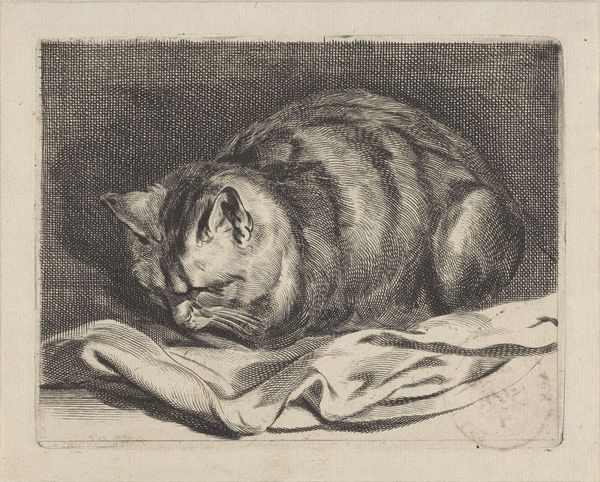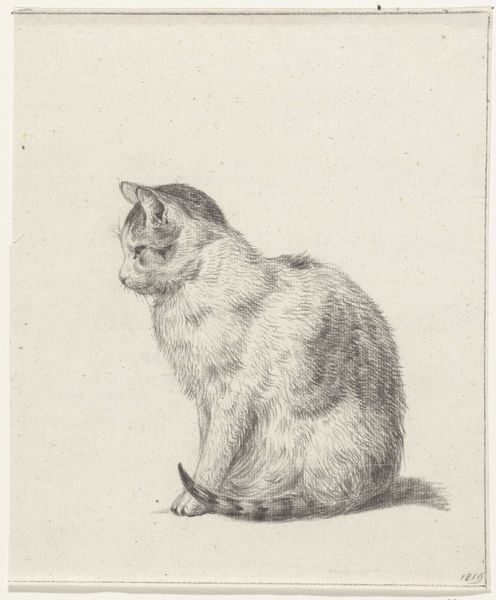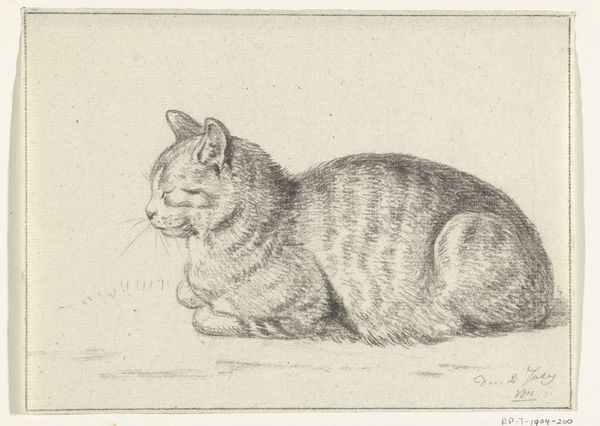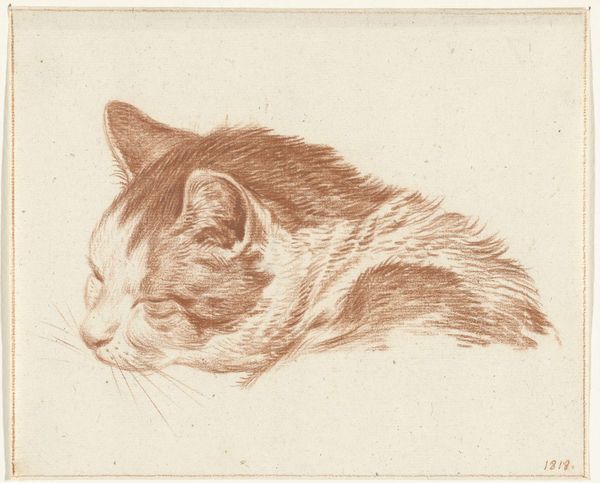
painting
#
portrait
#
dutch-golden-age
#
painting
#
animal portrait
Dimensions: height 86 mm, width 132 mm
Copyright: Rijks Museum: Open Domain
Curator: Adriaen van de Velde painted this piece sometime between 1646 and 1672, they titled it, rather straightforwardly I think, "Kat liggend met de kop tussen de voorpoten"— Cat lying with its head between its paws. Editor: Oh, what a sleepy darling! I just want to stroke that spotted fur. There’s something very restful, even melancholic, in the way it's so utterly sprawled. Curator: Absolutely. The animal is captured in a moment of repose, seemingly oblivious to any external pressures, in a world where even cats must confront societal power structures, domesticity and its implications. It speaks volumes about leisure and comfort. Editor: Exactly! In 17th century Netherlands, who got to experience and project such idyll? Pets were luxury items and a mark of affluence; therefore, this depiction could symbolize Dutch comfort acquired through colonial profits and mercantile exploitations. Curator: I do not disagree, and yet I wonder too, is it just a lovely cat? Its form almost fills the entire space—such presence for such a small subject—and the light falls so gently, almost tenderly, on the curve of its back. Did Van de Velde intend for us to feel that intimacy? Editor: Every artistic choice reflects intentionality, however subconscious! Consider how many humans in this era were denied not only leisure, but also a sense of self, rendered simply a laboring body. The painting thus becomes a silent commentary on those left out of the canvas. Curator: So it is with all great art: speaking not just about the subjects themselves, but the very world they inhabit, its light, shadows, and—yes— its many inequalities. Editor: And it demands of us not just to see a picture, but the socio-historical backdrop which has determined the image to start. It speaks to the relationship between the painting itself, to a specific period and context.
Comments
No comments
Be the first to comment and join the conversation on the ultimate creative platform.
